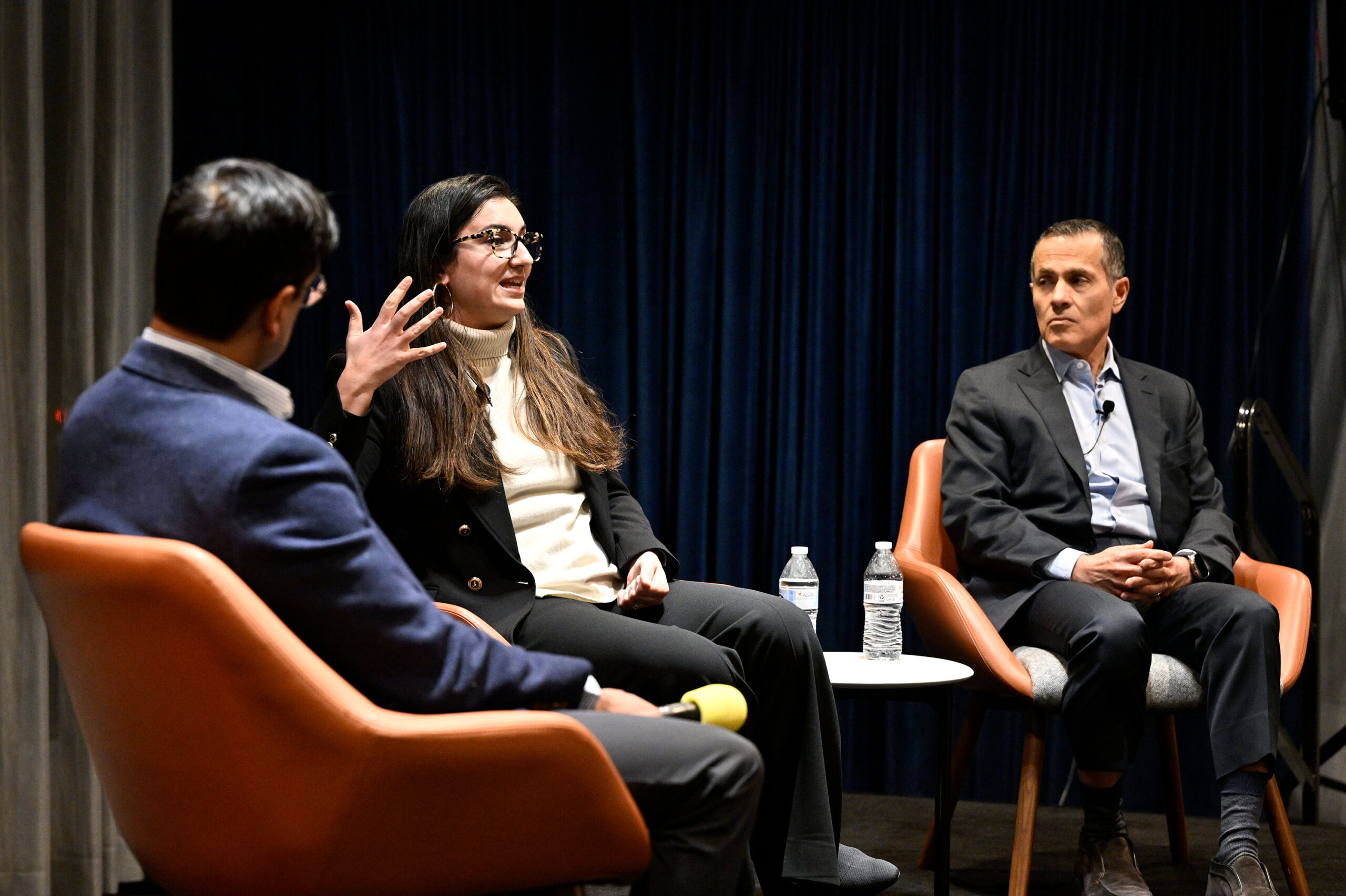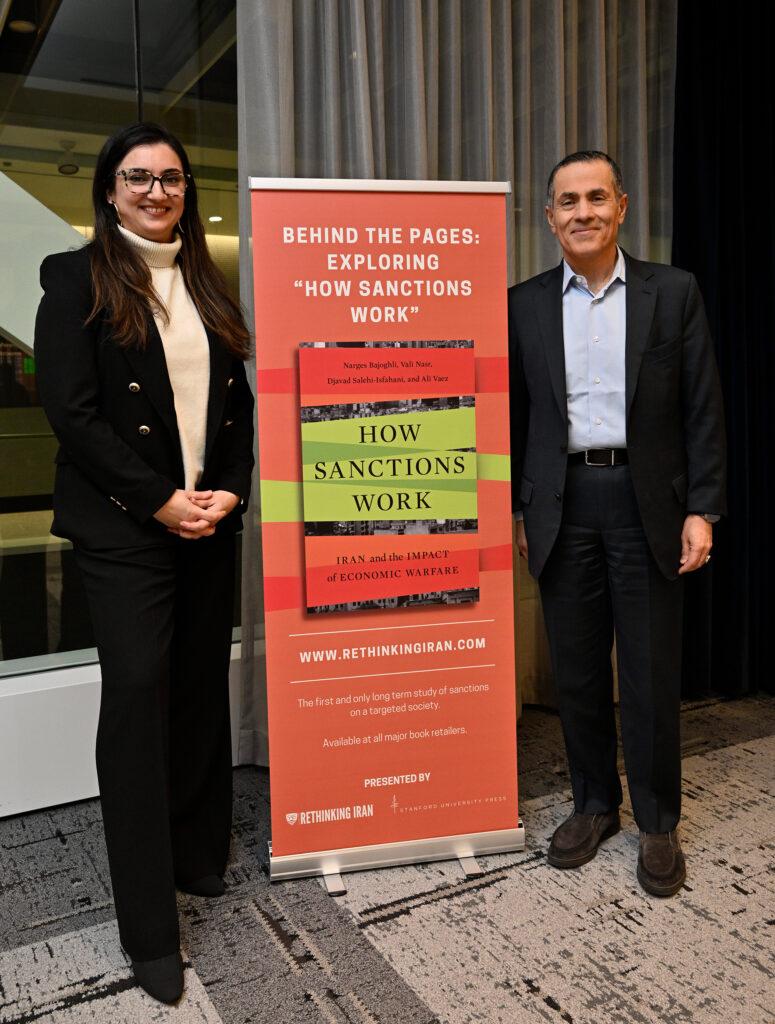Do sanctions actually work? Experts evaluate the efficacy of this widely used foreign policy tool
A new book, “How Sanctions Work: Iran and the Impact of Economic Warfare,” explores the impact of sanctions through Iran to examine if the foreign policy tool meets intended objectives

Key Takeaways
- Iran is one of the most sanctioned countries in the world.
- A new book argues sanctions don’t work as they are intended.
- “What we found is that it works in ways that we don’t want it to work. And it doesn’t work in the ways that we want it to work,” said Middle East expert Vali Nasr, one of the book’s authors.
While sanctions on Iran are nothing new—the U.S. first imposed sanctions on the country in 1979—recent growing tensions in the Middle East have brought these sanctions to the forefront. Most recently, before carrying out a response against Iran-backed militants for the killing of three U.S. service members in Jordan, the Biden administration imposed more sanctions on officers and officials in the Islamic Revolutionary Guard Corps for their role in manufacturing Iranian drones, The New York Times reported.
Iran was previously the most sanctioned country in the world, until Russia surpassed it in 2022 due to sanctions imposed following the invasion of Ukraine. Yet even outside of Iran, America’s use of sanctions as a foreign defense and deterrence tactic has been growing for years. The Treasury Department estimated that U.S. sanctions have increased by roughly 900% over the past 20 years. Sanctions are often viewed as a preferred option to enforce behavioral change rather than armed, military combat.
“Sanctions work in two ways,” said Narges Bajoghli, anthropologist and assistant professor of Middle East Studies at Johns Hopkins University’s School of Advanced International Studies and co-author of “How Sanctions Work: Iran and the Impact of Economic Warfare,” during a book launch event at the Johns Hopkins University Bloomberg Center. “Either they’re supposed to put enough pressure on the regime and targeted state to change its behavior, or they’re supposed to put enough pressure on society to rise up against the state to then topple the state.”
“It’s an invisible war—it’s a war that takes place over a long period of time. Photojournalists can’t take pictures of what sanctions do over time [or] how it impacts people.”
– Narges Bajoghli, anthropologist and assistant professor of Middle East Studies
And yet, through the book’s study of sanctions on Iran, Bajoghli and her co-authors—Vali Nasr, Djavad Salehi-Esfahani, and Ali Vaez—found that sanctions often have the opposite effect of their intended purpose.
“Iran is a great case study to actually look at this now powerful and often-used tool of American foreign policy, and to examine, does it work and does it not work?” said Nasr, a Middle East expert and SAIS faculty member and former SAIS dean. “And what we found is that it works in ways that we don’t want it to work. And it doesn’t work in the ways that we want it to work.”
Rather than hurting the Iranian regime leaders, sanctions have strengthened the Iranian state and military, and ended up hurting the exact people they’re supposed to help—the middle class, Nasr said. More than 20% of the middle class has fallen below the poverty line, the World Bank reported, and 80% of citizens now rely on government handouts. And it’s the middle class who could be the force for change in the country, according to Nasr and Bajoghli.

(Photo by Kaveh Sardari)
Iran is not the only example in which sanctions have resulted in unintended consequences. Since 1970, unilateral sanctions imposed by the U.S. have achieved foreign policy goals in just about 13% of cases, according to one study. A recent Congressional Research report evaluating U.S. sanctions in Venezuela found that sanctions “exacerbated an ongoing economic and humanitarian crisis caused by government mismanagement and corruption that has promoted 7.7 million Venezuelans to flee.” U.S. sanctions also exacerbated humanitarian crises in North Korea, reported UNICEF, putting 60,000 vulnerable children at risk of starvation due to limited humanitarian aid.
Supporters of sanctions argue they can be effective when “applied with more discipline and only as part of a strong diplomatic effort.” But they agree that sanctions need reform. Recently, more advocates on Capitol Hill have been critical of sanctions due to the increased migration from Venezuela, Cuba, and Nicaragua, in part due to U.S. imposed sanctions, Bajoghli said. The U.S. has also taken steps to review the impact of past sanctions to improve policy in the future. The U.S. Department of Treasury launched a sanctions review in 2021 to modernize sanctions, which led to two policy changes to support humanitarian aid throughout sanctioned areas.
The Biden administration has committed to a human rights-based policy agenda, and the Treasury Department said it will continue to review the “unintended consequences of current sanctions regimes on humanitarian activity necessary to support basic human needs.”
The authors hope their book will shed light on the personal, human impact of sanctions.
“It’s an invisible war—it’s a war that takes place over a long period of time. Photojournalists can’t take pictures of what sanctions do over time [or] how it impacts people,” Bajoghli said. “We wanted to bring sanctions down to the human level, so people could see what sanctions are actually doing.”